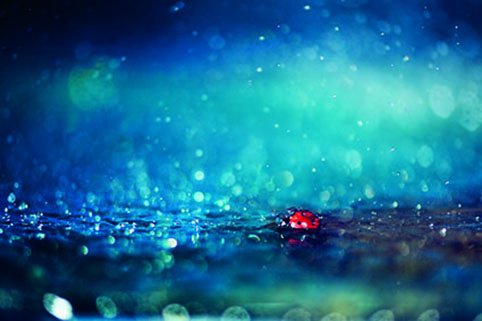Take your photography to new heights using your DSLR’s in-camera effects.
By Jac Kritzinger
Creating an abstract and artistic feel for your travel photos can make them stand out from the rest. While using editing software can be helpful for achieving this, nailing those interesting effects in the photo itself is much more rewarding. Here are some ideas to help you on your way.
Crash the party
If you own a zoom lens, one of the most interesting photographic effects is right at your fingertips. The ‘crash zooming’ technique creates a streaking, radial blur around your subject, with eye-popping results. This works well with all kinds of static subjects (although brightly coloured scenes create more vibrant streaks), indoors or out
Simply select an aperture no faster than 1/40 sec (using shutter-priority mode will take care of the metering), zoom to a length of roughly 50 mm and focus. Ensure your subject is in the centre of the frame. Then quickly zoom out while simultaneously firing the shutter. It may take some practice, but the results on your camera screen will pleasantly surprise you!
Get moving
Including motion blur in your photos can add a dreamy and dramatic effect. Once again, a slow shutter speed in the region of 1/40 sec is key to achieving this result.
One way of mastering this technique with subjects moving linearly is called ‘panning’. Make sure your camera is set to continuous-shooting mode, allowing you to shoot rapid frames in succession. Focus on your subject as it approaches, then move your camera in unison with it as it passes in front of you, firing the shutter a few times as you do so. This will ensure your subject is sharp, while the background and foreground are both blurred, injecting a sense of energy into the frame. Add a burst of flash to make your subject pop out even more. Keep on checking your screen until you get it right.
By keeping your camera static (don’t forget to slow down the shutter speed) and shooting while a moving subject crosses the frame, you will achieve the opposite effect: the background and foreground will be sharp, while your subject will be blurred. Both techniques add something magical to your images and will work with people, animals, vehicles … whatever crosses your path.
Multiply the magic
Most digital cameras are equipped with a multiple-exposure function – though very few people use this, or even know what it is. Having gone slightly out of vogue since the arrival of the digital age, this option can still be a nice little trick up the modern photographer’s sleeve. Basically, ‘multiple exposure’ means the camera’s ability to take multiple images and stack them on top of one another, combining them all into a single frame. Most cameras can combine at least three photos into one frame. The possibilities, however, are endless.
Once you’ve set your camera to the multi mode (and selected the number of frames you’d like to combine), try out some basic scenarios to begin with. One example is to photograph a landscape (a city skyline works well) on a full-moon night.
In your first shot, ensure you exclude the moon and leave ample space at the top of the frame. Then, in your second shot, zoom in on the moon to make it appear much larger, this time leaving extra space at the bottom of the frame. The combined effect will be that of a huge moon suspended over the city or countryside, making for a dramatic and surreal image.
The trick is to keep leaving enough space for elements to be added into the final collage, like pieces of a puzzle. You are only limited by your imagination and your willingness to experiment.
Open wide
Should you be lucky enough to own a fast lens with a wide maximum aperture such as f1.4, ensure you use it for some interesting results. The shallow depth of field (throwing everything directly in front and behind of your subject out of focus) that these lenses can create easily makes for romantic, dreamlike moods in your images.
This applies particularly to landscapes. Try breaking the rules now and again by not using a small f-stop (such as f11) to ensure every aspect is sharp. Instead, shoot at large maximum apertures for a completely different feel. Soft, slightly unreal images can totally alter the mood of time and place. You can even take it one step further by switching over to manual focus and capturing the entire scene looking a little out of focus.
Photography Gallo/Gettyimages
(This article was first published in the autumn 2015 issue of AA traveller magazine)




